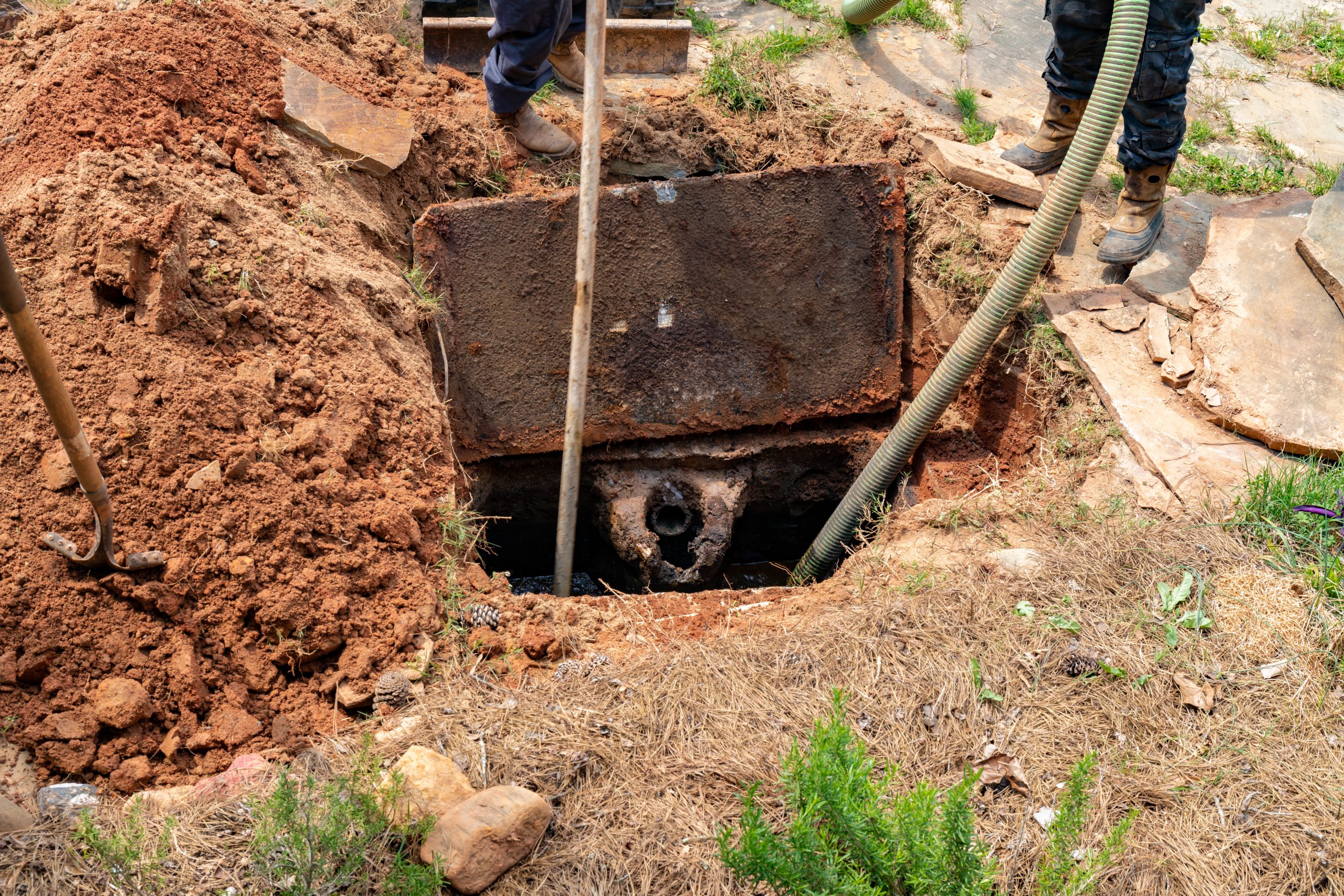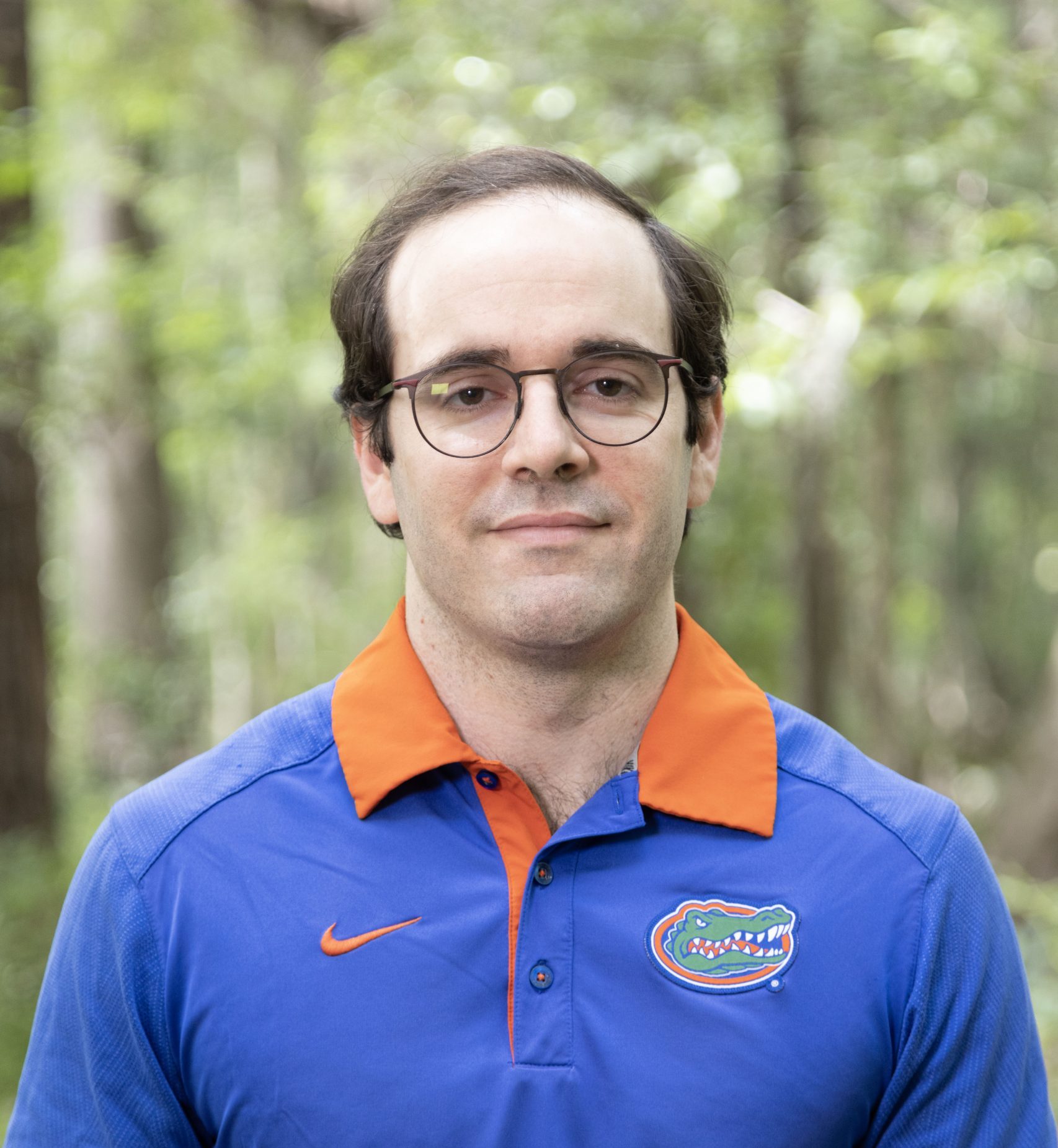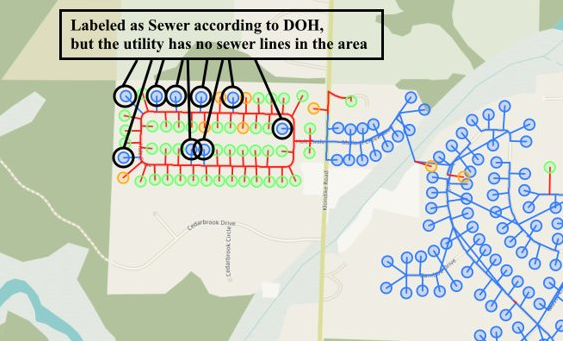Florida has over 2.7 million septic systems and it’s estimated that cleaning them up will cost billions. A new tool developed by CCS scientists is saving counties in Florida time and money to convert septic systems to sewer networks, while reducing environmental impacts that result when septic systems fail. The Septic to Sewer Optimization Tool uses artificial intelligence to rapidly identify the most cost-efficient projects to connect homes with existing septic systems to sewer networks.

“There are a lot of aging systems and systems that are vulnerable to climate change impacts like sea level rise, and these systems pose a problem for water quality,” said Associate Research Scientist Ron Fick, Ph.D. who co-led the development of the tool. “From a computer science perspective, this is an optimization problem—what’s the most efficient way of expanding the current sewer network to reach homes not currently serviced at minimal cost.”

Research shows that there is significant risk of surface water pollution from septic systems and that climate change impacts can contribute to inundated and failed systems. Failed septic systems pose a public and environmental hazard—untreated wastewater, including the bacteria and pollutants in it, can be released to the ground surface, resulting in a very unpleasant front yard and potential negative health risks.
Florida’s sandy and porous soil, coupled with its low-lying, flat geography creates an environment where residents are highly vulnerable to sea level rise, groundwater rise and increased precipitation, which are factors that contribute to and exacerbate the impacts of septic system failure.
Compared to septic systems, sewer systems are less susceptible to flooding, and can handle greater volumes of wastewater and stormwater runoff. In contrast, septic systems rely heavily on the soil for wastewater filtration.

The CCS Septic to Sewer Optimization Tool accelerates project analysis and development by using algorithms to identify and group potential conversion projects for a given region—within hours instead of months. It prioritizes projects for decision makers like utility companies, counties and regional planners, based on cost-effectiveness, access to existing networks, funding sources and environmental benefits.
“For utilities or local governments to make these septic to sewer conversion projects, it requires a lot of capital input and getting that level of funding is really hard for a local government to do on its own,” said Tricia Kyzar, Ph.D., researcher and co-developer of the tool. “The Septic to Sewer Optimization Tool can give supporting data to municipalities or utilities who can use that data to move forward with a grant application.”
The tool uses sewer network data from utility companies and data from the Florida Water Management Inventory (FLWMI) to inform decision makers which projects have the greatest cost efficiency for conversion.

The tool identifies inaccurate sewer and parcel-level wastewater data, which is critical for timely infrastructure updates, and to the Florida Department of Environmental Protection, who requires the FLWMI to be fully updated with geographic information on wastewater treatment methods by July 1, 2025.

“What we’re striving for as a whole is capitalizing on expertise to deliver unbiased, data-driven and integrated solutions for environmental health,” said CCS Director Christine Angelini, Ph.D. “We work very hard to empower our decision makers who have tough decisions to make about where to invest in infrastructure, management actions or policy changes and we empower them with tools to understand, predict and adapt to rapidly changing conditions in coastal areas.”
To learn more about how to adapt the Septic to Sewer Optimization tool to your area, contact Ron Fick at rfick@ufl.edu or Tricia Kyzar at tkyzar@ufl.edu.